To my dear friends at the American Management Association who have guided, supported, and encouraged my writing and speaking engagements over the years, especially Stephen S. Power, senior acquisitions editor at AMACOM Books; Rosemary Carlough, vice president of marketing; and Nicole Morgenstern, Dave Summers, and Doug Sohn on the training/digital marketing side of the house. Thank you all for your ongoing friendship and partnership. I absolutely love working with you!
And to the finest legal team and legal minds in the business, who helped review select portions of this manuscript as it made its way through the various stages of development: Rich Falcone (no relation to the author), shareholder and employment litigation partner with Littler Mendelson in Costa Mesa, CA; Frank Melton, principal and labor employment attorney in the Los Angeles office of Jackson Lewis P.C.; Jacqueline Cookerly Aguilera, partner, labor and employment, and Kathryn McGuigan, counsel, labor and employment, with Morgan, Lewis & Bockius, LLP in Los Angeles; and Christopher W. Olmsted, shareholder in the San Diego office of Ogletree, Deakins, Nash, Smoak & Stewart, P.C. I consider myself so fortunate to have partnered with you all on this third edition, and I benefitted tremendously from your guidance and counsel.
Introduction
Warning! The traditional negative connotation of discipline in the workplace is an outdated vestige of the past. In todays workplace, progressive discipline is going to assume a new role, more positive than anything weve seen up until now. So dont pick up this book thinking that youre about to enter a world of negative strategies to mandate employee compliance by wielding tools of control. Attracting and retaining the best talent has to do with encouraging people to be their best. Its about leadership, fairness, and a willingness to address issues head-on.
Progressive discipline is a means of communicating problems directly and in a timely fashion so that employees can involve themselves in the problem-solving process. But proper communicationboth verbal and writtenis difficult to accomplish without a framework for structuring your thoughts and sharing your suggestions with your employees. The tools presented in this book offer solutions to one of the most difficult management issues: addressing the inevitable problems that surface in the workplace while maintaining worker loyalty, confidence, and buy-in.
The employee relations system presented here is focused on treating workers with dignity and respect. This simple premise seems easy enough to master, yet many companies have learned the hard way that mishandling disciplinary actions strips people of their dignity and provokes feelings of revenge and anger that all too often find outlet only in the courts.
This book will show you how to:
 Enhance employee performance. Rather than hitting workplace performance problems head-on with negative or punitive measuresor worse, avoiding the problem until it becomes intolerableyoull learn to address minor infractions before they become major impediments. This book will model a system that will enable you to provide subpar performers with tools, direction, and training to turn unacceptable behavior into positive output.
Enhance employee performance. Rather than hitting workplace performance problems head-on with negative or punitive measuresor worse, avoiding the problem until it becomes intolerableyoull learn to address minor infractions before they become major impediments. This book will model a system that will enable you to provide subpar performers with tools, direction, and training to turn unacceptable behavior into positive output.
 Protect your company. This book attempts to incorporate all the legal theory floating around out there into one usable format that simultaneously makes documenting subpar performance easier for managers, makes accepting responsibility for ones actions a primary tenet for employees, and most important, shifts the responsibility for performance improvement away from the company and back toward the worker, where it rightfully belongs. As a result, youll be able to construct defensible written disciplinary notices that will withstand legal scrutiny.
Protect your company. This book attempts to incorporate all the legal theory floating around out there into one usable format that simultaneously makes documenting subpar performance easier for managers, makes accepting responsibility for ones actions a primary tenet for employees, and most important, shifts the responsibility for performance improvement away from the company and back toward the worker, where it rightfully belongs. As a result, youll be able to construct defensible written disciplinary notices that will withstand legal scrutiny.
 Save time and make your life easier. These 101 model write-ups provide real-life samples of how positive or constructive discipline plays itself out in the workplace. These samples will save you time because they can be customized to fit most disciplinary situations. Simply put, youll no longer have to guess at what verbiage you should include in a write-up. And at the same time, youll have a blueprint format that walks you through the verbal discussion with your employee so that you can present positive solutions in addition to clear and unambiguous statements of the consequences of the employees actions.
Save time and make your life easier. These 101 model write-ups provide real-life samples of how positive or constructive discipline plays itself out in the workplace. These samples will save you time because they can be customized to fit most disciplinary situations. Simply put, youll no longer have to guess at what verbiage you should include in a write-up. And at the same time, youll have a blueprint format that walks you through the verbal discussion with your employee so that you can present positive solutions in addition to clear and unambiguous statements of the consequences of the employees actions.
Who Should Read This Book?
Written for human resources managers, department heads, first-line supervisors, and business owners, this book is designed as a quick reference for improving employees behavior and, if necessary, constructing terminations that will withstand legal scrutiny. With very little theory, it provides numerous examples of legally defensible disciplinary actions for practically all types of employee performance problems, such as substandard work quality, absenteeism, tardiness, insubordination, profane language in the workplace, and general misconduct.
Why Is It So Hard to Write Up Employees?
Its simply a fact that in todays legal system, companies that discharge employees will, if challenged, have an obligation to prove that they made affirmative efforts to rehabilitate those employees before reaching the ultimate decision to terminate. When confronted by an arbitrator or scrutinized by a jury, companies need to show that they had no alternative but to separate an individual who refused to accept the organizations invitations to improve his or her performance. Without such proof, the company can find itself liable to the former employee for back pay, job reinstatement, and, potentially, punitive damages. To make matters worse, those punitive damages could in certain circumstances be levied against the manager personally (should that individual be deemed to be working outside the course and scope of his employment).
This book shows you how to construct documents that are both tough and fair. Traditionally, there are problems that managers face when they confront employees regarding their behavior: How will the employee take the news? Will confrontation make matters worse? What if the employee stays clean only long enough to get past the active time frame of the disciplinary write-up?
In addition, because the write-up is a legal document, there is a residual fear that what you put in writing can somehow come back to haunt you. For example, managers typically second-guess themselves when it comes to questions like: Can I write specifics? Am I violating this individuals privacy? Is the employees problem somehow protected by one of the many worker protection laws like the Family Medical Leave Act (FMLA), the Americans with Disabilities Act (ADA), or workers comp discrimination rulings? What if there are numerous problems that dont seem to be related to one anothercan I move forward in the progressive discipline process by somehow bundling those disparate infractions together?


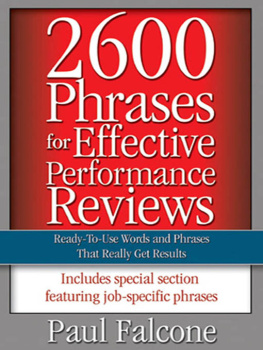
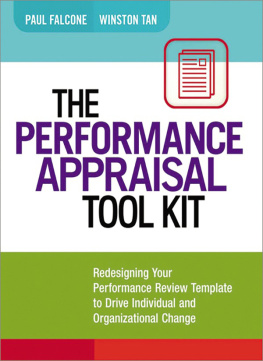
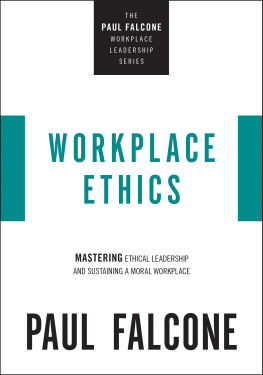
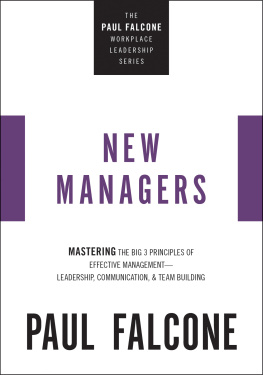


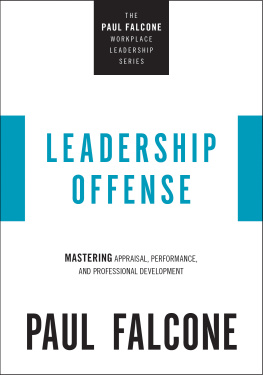


 Enhance employee performance. Rather than hitting workplace performance problems head-on with negative or punitive measuresor worse, avoiding the problem until it becomes intolerableyoull learn to address minor infractions before they become major impediments. This book will model a system that will enable you to provide subpar performers with tools, direction, and training to turn unacceptable behavior into positive output.
Enhance employee performance. Rather than hitting workplace performance problems head-on with negative or punitive measuresor worse, avoiding the problem until it becomes intolerableyoull learn to address minor infractions before they become major impediments. This book will model a system that will enable you to provide subpar performers with tools, direction, and training to turn unacceptable behavior into positive output.